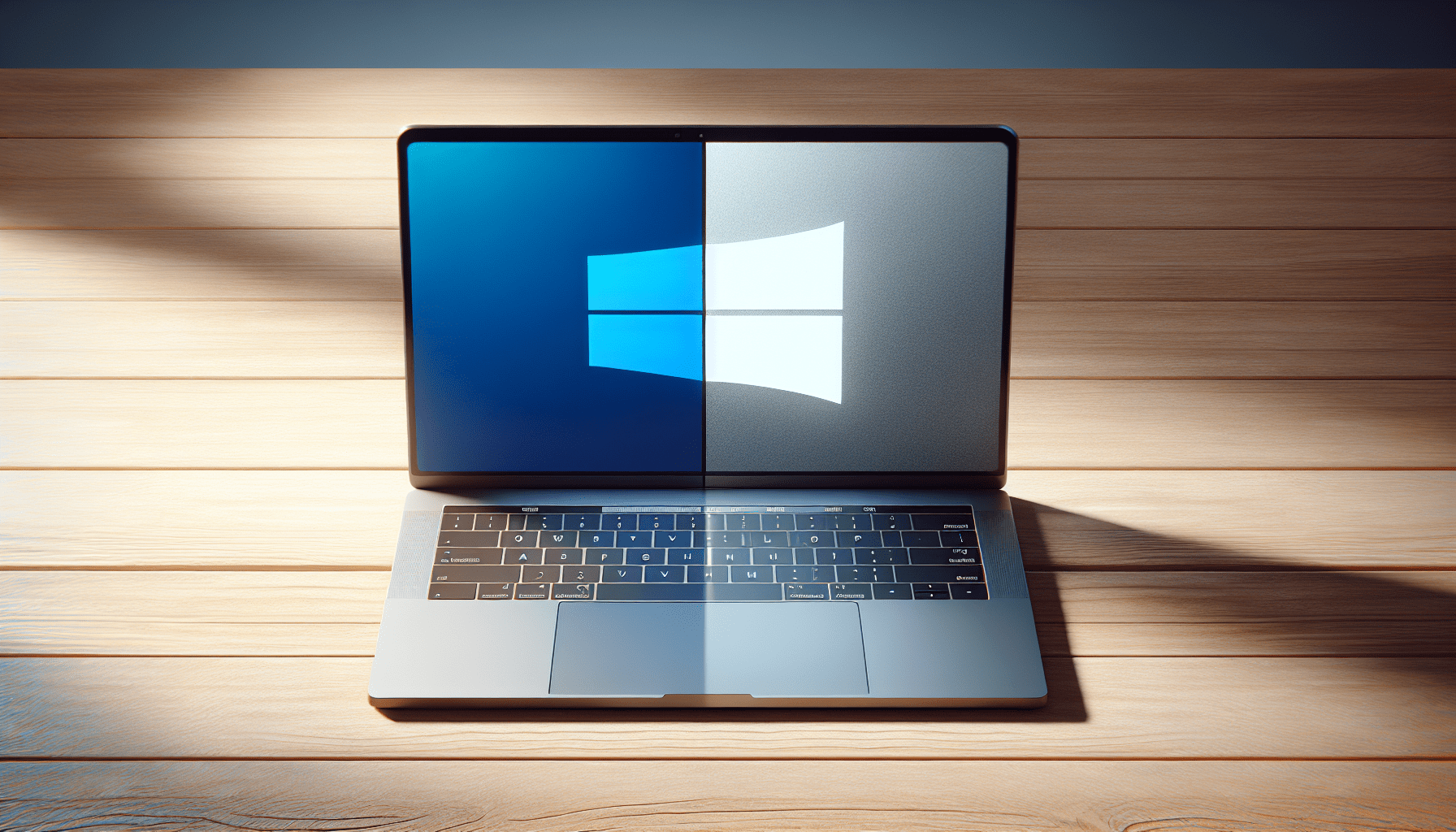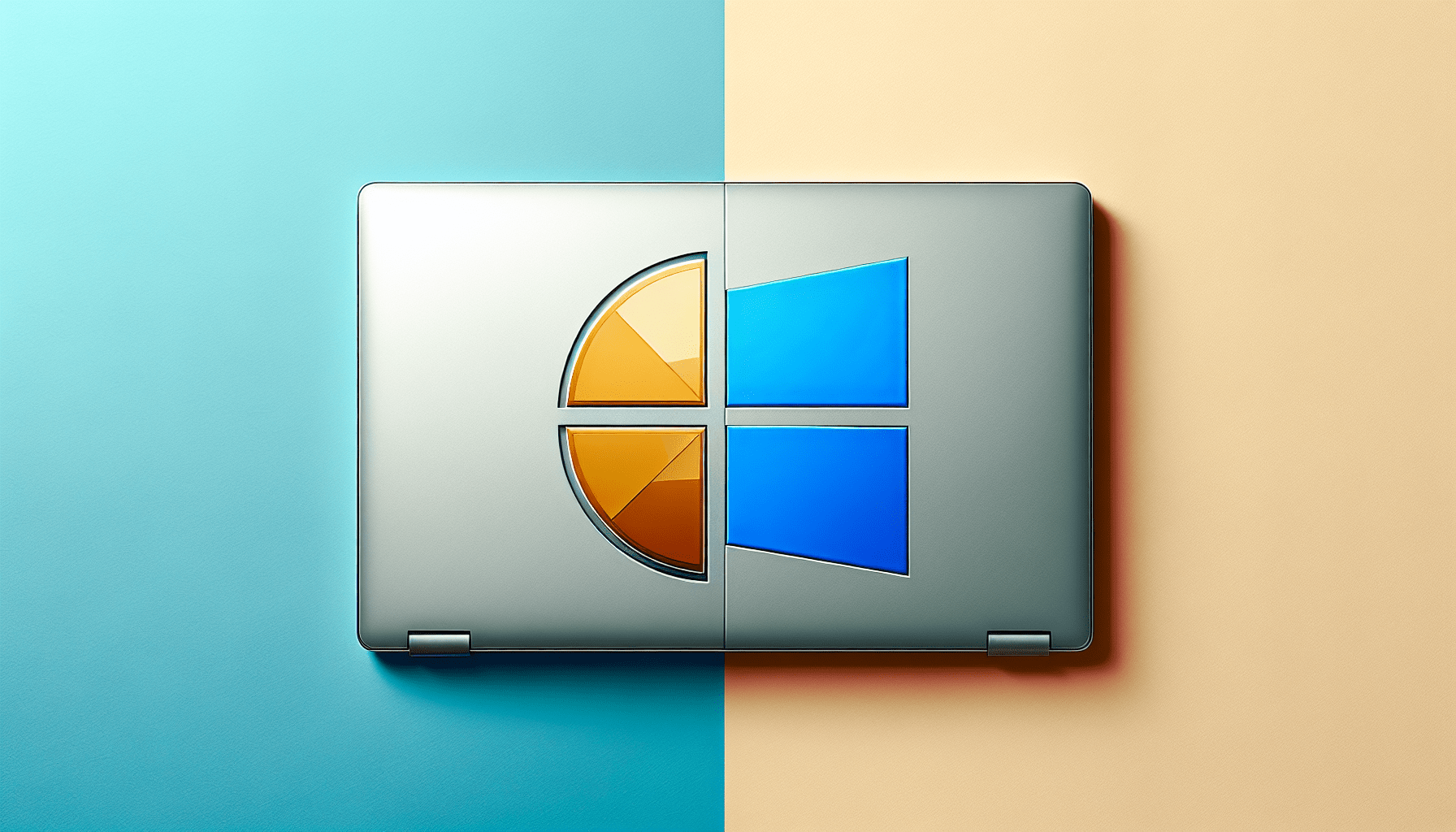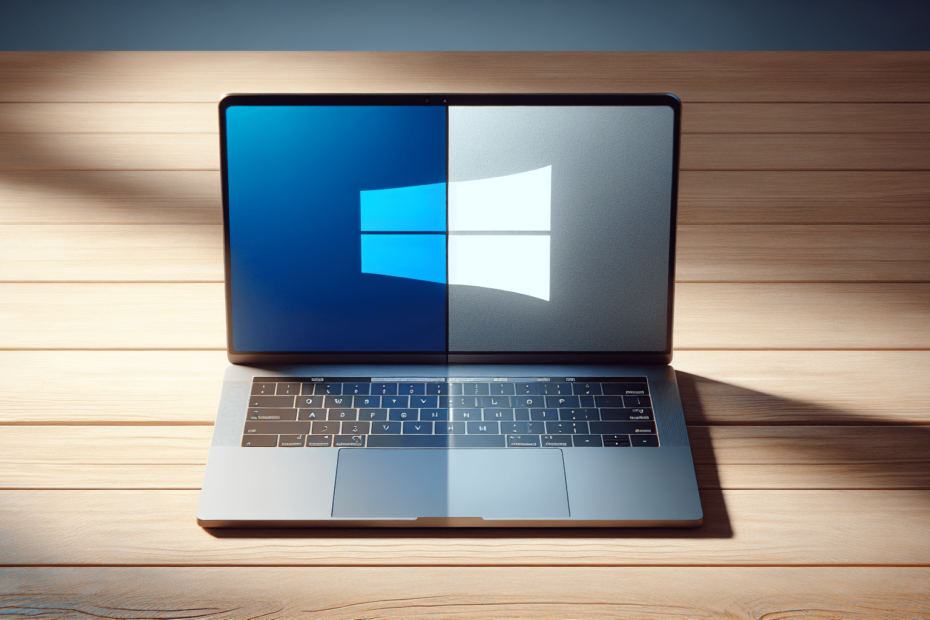







So, you’re in the market for a new laptop and you’re faced with a big decision: should you go for a Windows 10 or a Windows 11 laptop? It’s a choice that many people find themselves pondering, unsure of which operating system will serve them best. Well, fear not! In this article, we’ll break down the key differences between Windows 10 and Windows 11, helping you make an informed decision about which one is right for you. By the end, you’ll have a clear picture of whether it’s time to upgrade or stick with the tried-and-true Windows 10. Let’s dive in!
Hardware Requirements
Minimum Requirements for Windows 10
When considering the hardware requirements for Windows 10, you’ll find that they are relatively modest. For the 64-bit version of Windows 10, the minimum processor requirement is a 1 GHz or faster processor. The system also needs to have at least 2 GB of RAM and 20 GB of available hard disk space. Additionally, a DirectX 9 graphics card or later is required.
Minimum Requirements for Windows 11
Windows 11, being the latest iteration of the operating system, has slightly higher hardware requirements. To run Windows 11, you will need a compatible 64-bit processor with at least 1 GHz clock speed and 2 or more cores. The system should have 4 GB of RAM or more and a minimum of 64 GB of storage. A DirectX 12 compatible graphics card is also necessary.
Compatibility with Older Hardware
One of the concerns when considering an upgrade to a new operating system like Windows 11 is its compatibility with older hardware. While Windows 11 does have stricter hardware requirements compared to Windows 10, Microsoft has provided a PC Health Check tool to determine if your device meets the necessary criteria. If your system falls short, it’s possible that you may not be able to upgrade to Windows 11 and may need to continue using Windows 10 on your current hardware.
Features and User Interface
Start Menu
The Start Menu in Windows 10 is a familiar and functional feature. It provides quick access to frequently used applications, settings, and the search function. Windows 11, on the other hand, introduces a redesigned Start Menu. It now features a centered layout with a simplified and more modern look. Live tiles are replaced with static icons, creating a cleaner aesthetic. Depending on your preference for familiarity or a fresh new look, the Start Menu in either operating system can cater to your taste.
Taskbar and System Tray
Both Windows 10 and 11 have a taskbar and system tray that provide convenient access to essential functions and notifications. In Windows 10, the taskbar is positioned at the bottom of the screen and includes a variety of icons for launching apps and switching between open windows. Windows 11 retains the taskbar but moves it to the centered position, aligning with the centered Start Menu. The system tray in both operating systems allows you to access system functions, such as network connections and volume controls.
Virtual Desktops
Virtual desktops are a useful feature for organizing and multitasking. Windows 10 introduced virtual desktops, allowing you to create separate desktops for different workspaces or projects. Windows 11 builds upon this functionality with the addition of Snap Layouts and Snap Groups. These features make it easier to organize and switch between apps and windows. If you frequently work with multiple applications and want a more streamlined multitasking experience, Windows 11 could be the better choice for you.
Snap Assist
Snap Assist is a feature in both Windows 10 and 11 that allows you to easily arrange and resize open windows on your desktop. It makes multitasking more efficient by snapping windows to different positions or splitting the screen between applications. The main difference in Snap Assist between the two operating systems lies in the user interface. Windows 11 introduces a new, more intuitive Snap Assist experience, making it even easier to manage your windows and improve productivity.
Gaming Features
Windows is a popular choice among gamers, and both Windows 10 and 11 offer a range of gaming features. DirectX 12, which enhances graphics and performance, is supported in both operating systems. Windows 11, however, introduces several gaming-focused features such as Auto HDR and DirectStorage, which can improve visuals and load times for compatible games. Additionally, Windows 11 includes the Xbox app and Game Pass integration, providing a seamless gaming experience. If gaming is a priority for you, Windows 11 may offer a more optimized and enjoyable gaming environment.
Microsoft Store and Apps
The Microsoft Store is the central hub for downloading and updating applications on Windows. While both Windows 10 and 11 share the same Microsoft Store, Windows 11 introduces a rebuilt and redesigned Store experience. It promises faster and more reliable downloads and updates, as well as a wider range of apps, including support for Android apps. If having access to the latest and improved Microsoft Store experience is important to you, Windows 11 would be the preferable choice.

Performance and Speed
Windows 10 Performance
Windows 10 has been a widely used and reliable operating system since its release. With regular updates and optimization, it offers stable performance on a variety of hardware configurations. However, as with any operating system, the performance can be influenced by factors such as the hardware specifications of your device and the number of background processes running. Windows 10 generally runs smoothly and provides satisfactory performance, especially on newer hardware.
Windows 11 Performance
Windows 11 comes with performance improvements and advancements that can benefit your computing experience. It is designed to take advantage of modern hardware capabilities, resulting in faster boot times, improved energy efficiency, and overall better performance. The streamlined and optimized architecture of Windows 11 can contribute to enhanced responsiveness and a more fluid user experience. If you have newer hardware or are seeking improved performance, Windows 11 may provide a noticeable boost over Windows 10.
Optimization for Older Hardware
While Windows 11 offers enhanced performance and optimizations, it is important to note that some older hardware may not meet the minimum requirements for Windows 11. If you have older hardware that is not compatible with Windows 11, you may still be able to obtain satisfactory performance on Windows 10. Additionally, Microsoft has stated that they will continue to support Windows 10 until October 14, 2025, providing security updates and bug fixes. Therefore, if you have older hardware that is compatible with Windows 10, it can still serve you well in terms of performance and support.
Security and Privacy
Windows 10 Security
Windows 10 has undergone numerous security improvements since its release. Microsoft regularly releases security updates and patches to address vulnerabilities and protect users from emerging threats. Windows 10 includes built-in security features such as Windows Defender, which provides real-time protection against viruses and malware. The operating system also offers various security options, including Windows Hello for biometric authentication, BitLocker for data encryption, and Windows Firewall for network protection.
Windows 11 Security
Windows 11 builds upon the security foundation of Windows 10 and introduces additional security features. It includes hardware-based security enhancements like TPM 2.0 and Secure Boot to provide stronger protection against unauthorized access and attacks. Windows 11 also incorporates Microsoft Defender Antivirus, which offers advanced threat detection and mitigation capabilities. With its enhanced security features, Windows 11 aims to provide a more secure computing environment for users.
Privacy Settings and Control
Both Windows 10 and 11 offer privacy settings that allow you to control and customize the information shared with Microsoft and third-party applications. In recent years, Microsoft has made efforts to improve privacy controls and transparency. Windows 11 continues these efforts and provides users with more granular control over privacy settings. You can choose the level of data sharing you are comfortable with and tailor the privacy settings to meet your preferences.

Compatibility and Support
Software Compatibility
When considering the compatibility of software applications, it’s important to note that most programs that run on Windows 10 will also run on Windows 11. The vast majority of popular software and productivity tools have already been updated to work seamlessly with Windows 11. However, it is always recommended to check the compatibility of any critical or specialized software applications you rely on before making the switch to Windows 11.
Driver Support
Driver support is another critical factor to consider when deciding between Windows 10 and 11. Windows 10 has had several years to establish driver compatibility for a wide range of hardware devices. However, as Windows 11 becomes more widely adopted, hardware manufacturers will increasingly prioritize driver support for the latest operating system. It’s essential to ensure that your hardware devices have compatible drivers available for Windows 11 before considering an upgrade.
Long-term Support
Microsoft provides long-term support for its operating systems, which includes regular security updates and bug fixes. Windows 10 is currently scheduled to receive support until October 14, 2025. This means you can continue to receive updates and security patches for Windows 10 until that date. Windows 11, being the latest release, will likely have an extended support lifecycle. Microsoft typically provides ten years of support for its Windows operating systems, ensuring that users receive ongoing updates and support for an extended period.
Updates and Maintenance
Windows 10 Updates
Windows 10 follows a regular update schedule, typically releasing major updates twice a year, known as feature updates. These updates introduce new features, enhancements, and security fixes. Additionally, Windows 10 receives monthly cumulative updates that address security vulnerabilities and other bug fixes. Updates can be scheduled to install automatically or manually, giving you control over the update process.
Windows 11 Updates
Windows 11 aims to streamline the update process and reduce disruptions during updates. It introduces a new update mechanism that separates the operating system updates from app and driver updates. This means that critical operating system updates can be installed in the background without requiring a system restart. Windows 11 also includes ongoing support for Windows 10 apps, ensuring compatibility even as updates roll out.
Maintenance and Troubleshooting
Both Windows 10 and 11 offer built-in tools and features to help with maintenance and troubleshooting. Windows 10 includes utilities like Disk Cleanup, Disk Defragmenter, and the Task Manager, which can be used to optimize system performance and resolve common issues. Windows 11 inherits these maintenance tools and provides a similar range of troubleshooting and optimization options. Regular maintenance and utilizing these tools can help keep your system running smoothly on either operating system.
Price and Availability
Windows 10 Pricing
Windows 10 is available in various editions, each catering to specific user needs. The pricing of Windows 10 depends on the edition and licensing type. Windows 10 Home is typically priced lower compared to Windows 10 Pro, which offers additional features and functionalities targeted at business users. The pricing of Windows 10 varies based on region and the method of acquisition, whether it’s through original equipment manufacturers (OEMs) when purchasing a new device or purchasing a standalone copy.
Windows 11 Pricing
As of its release, Windows 11 is available as a free upgrade for existing Windows 10 users who meet the hardware requirements. New devices typically come pre-installed with Windows 11, so the cost of the operating system is included in the overall device price. However, for users who do not qualify for a free upgrade, standalone copies of Windows 11 may be available for purchase. The pricing for standalone copies will depend on the edition and licensing type, similar to Windows 10.
Availability
Windows 10 is widely available and can be acquired through various channels, including purchasing new devices, upgrading from older versions of Windows, or purchasing a standalone copy. Windows 11, being the latest release, is gradually becoming more widely available as new devices are introduced with Windows 11 pre-installed. However, it’s important to note that not all existing devices are eligible for a free upgrade to Windows 11 due to the stricter hardware requirements. Checking the availability and compatibility of Windows 11 with your specific device is recommended.
Future Proofing
Longevity and Support
Future proofing refers to ensuring that your chosen technology will remain relevant and supported for a reasonable duration. Both Windows 10 and 11 come with long-term support from Microsoft, ensuring that critical updates and security patches are provided for an extended period. However, considering that Windows 11 is the latest release, it is expected to receive support and updates for a longer duration compared to Windows 10. Opting for Windows 11 can provide a more future-proofed solution, especially if you have hardware that meets the requirements.
Technological Advancements
Windows 11 introduces several technological advancements and enhancements compared to Windows 10. With features like DirectStorage, Auto HDR, and improved gaming capabilities, Windows 11 leverages the latest hardware technologies to provide an improved user experience. If you want to benefit from these advancements and enjoy the latest innovations in operating system technology, Windows 11 would be the better choice.
Upgrading Options
If you are currently using a Windows 10 device and considering an upgrade, it’s important to assess the feasibility of upgrading your hardware to meet the requirements of Windows 11. If your hardware is compatible, upgrading to Windows 11 can provide a fresh and modern experience with improved performance and security. However, if your existing hardware is not compatible with Windows 11, Windows 10 can continue to serve you well with its ongoing support until 2025. Upgrading options should be carefully evaluated based on your hardware, budget, and desired feature set.
User Experience and Preference
Windows 10 Familiarity
Windows 10 has been around for several years and is a familiar choice for many users. Its user interface, Start Menu, and overall layout have become well-established, making it easy for users to navigate and find what they need. If you value familiarity and prefer to stick with what you know, Windows 10 offers a proven and familiar user experience.
Windows 11 Sleek and Modern Look
Windows 11 introduces a visually refreshed and modernized user interface. The centered Start Menu, clean taskbar, and rounded corners give Windows 11 a sleek and contemporary appearance. If you appreciate an updated and more visually appealing interface, Windows 11 offers a fresh and modern look that may better align with your preferences.
Customization and Personalization
Both Windows 10 and 11 allow for customization and personalization to varying degrees. Windows 10 offers a wide range of options for customizing the user interface, including wallpaper, colors, and taskbar settings. Windows 11, while introducing a redesigned interface, also provides customization options to personalize your desktop. The level of customization may vary between the two operating systems, with Windows 10 potentially offering a greater degree of flexibility in this aspect.
Conclusion
Considerations for Windows 10
Windows 10 has proven to be a reliable and widely adopted operating system. If you have older hardware that is not compatible with Windows 11, or if you prefer the familiarity and customization options of Windows 10, sticking with Windows 10 is a reasonable choice. Windows 10 also offers satisfactory performance and security, with ongoing support until 2025. It is a solid option for users looking for a stable and familiar operating system.
Considerations for Windows 11
Windows 11 brings several advancements and improvements over Windows 10, including enhanced performance, security features, and a sleek modern look. If you have compatible hardware and are seeking the latest technologies and a more visually appealing interface, upgrading to Windows 11 can provide a fresh and optimized user experience. Windows 11 also benefits from extended support and compatibility with the latest software and hardware advancements.
Decision-Making Factors
When making a decision between Windows 10 and 11, it’s important to consider your specific needs and preferences. Assess factors such as hardware compatibility, desired features, performance expectations, security requirements, and long-term support. Windows 10 offers familiarity, flexibility, and ongoing support until 2025. Windows 11 provides advanced features, improved performance, enhanced security, and a visually refreshed interface. By carefully evaluating these factors, you can make an informed decision that aligns with your computing needs.



